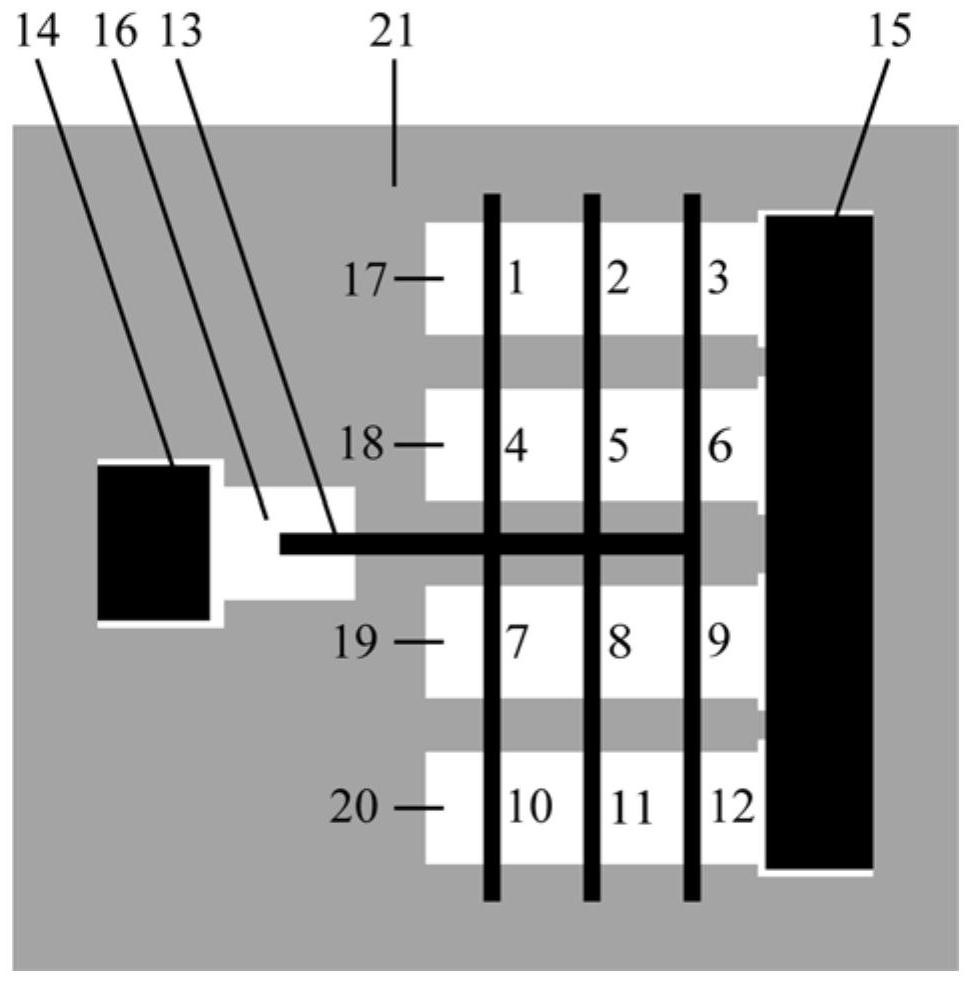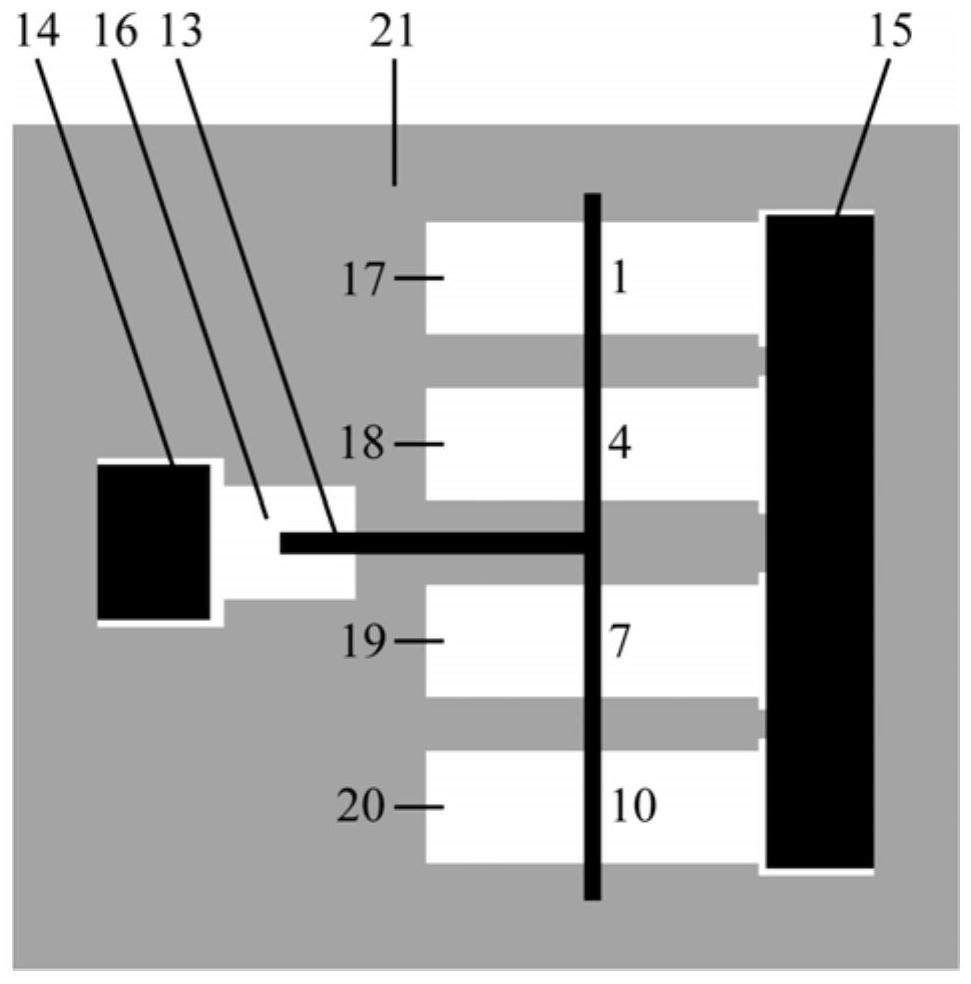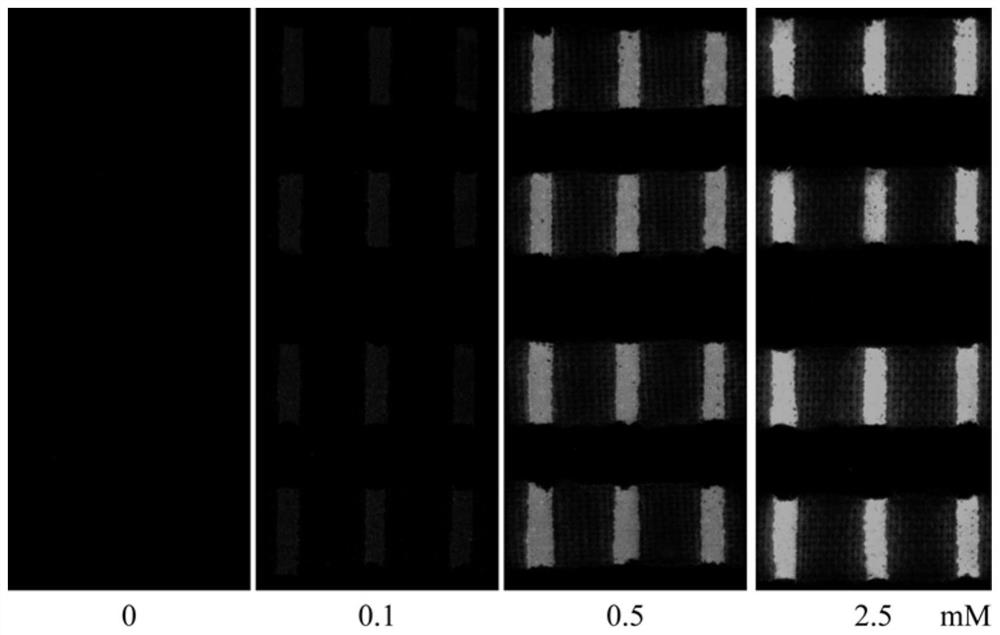Multi-path closed bipolar electrochemical luminescence chip and application thereof in detection and sensing
A light-emitting chip and electrochemical technology, applied in the field of microfluidic analysis, can solve the problems of difficult multi-target detection, increase detection error, complicated operation, etc., and achieve the effects of high detection accuracy, increased transfer rate, and high detection efficiency.
- Summary
- Abstract
- Description
- Claims
- Application Information
AI Technical Summary
Problems solved by technology
Method used
Image
Examples
Embodiment 1
[0068] The multi-channel closed bipolar electrochemiluminescent chip (referred to as chip A in this embodiment), its production and detection process is as follows:
[0069] 1. Use the drawing software Adobe Illustrator CS6 to design the configuration of chip A. The carbon electrodes (drive electrodes and closed bipolar electrodes) are made by carbon screen printing technology, and the support channel and report channel are made by solid wax screen printing technology. made.
[0070] The obtained chips are as figure 1 , figure 2 , Figure 5 and Figure 8 As shown, it includes integrated bipolar electrodes, positive 14 and negative 15 driving electrodes, support channel 16 and reporting channels 17-20;
[0071] One end of the integrated bipolar electrode is the bipolar electrode cathode 13;
[0072] The other end of the integrated bipolar electrode is divided into six parallel branches; each parallel branch spans two reporting channels; the part of the parallel branch pla...
Embodiment 2
[0081] The multi-channel closed bipolar ECL chip (called chip B in this embodiment) divides the negative electrode of the driving electrode on the basis of laying chip A, and its manufacturing and detection process is similar to that of chip A.
[0082] 1, Figure 5 It is a schematic diagram of the structure of cloth chip B, which includes bipolar electrode anodes 1-12, bisexual electrode cathodes 13, driving electrode positive electrodes 14, driving electrode negative electrodes 15, support channels 16 and reporting channels 17-20.
[0083] Chip A cannot supply power to the anodes of the bipolar electrodes in each reporting channel separately during detection. In order to make the chip provide more diversified detection modes, it is necessary to individually power the driving electrodes. Dividing the negative electrode of one driving electrode of chip A into four can provide driving voltages for the anodes of the bipolar electrodes in the four reporting channels respectively....
Embodiment 3
[0088] A multi-channel closed bipolar electrochemiluminescent chip (referred to as chip C in this embodiment), on the basis of chip A, the number of bipolar electrode anodes and reporting channels is simplified, and its production and detection process is the same as Chip A is similar.
[0089] 1, Figure 8 It is a structural schematic diagram of chip C, which includes bipolar electrode anodes 1-6, bipolar electrode cathode 13, driving electrode positive 14, driving electrode negative 15, support channel 16, and reporting channels 17 and 18.
[0090] 2. Set up several experimental groups to investigate chip C to simultaneously and accurately detect uric acid and glucose. The concentrations of uric acid and glucose are set to several different concentrations (0mM, 0.1mM, 0.25mM).
[0091]Modified 5 U / μL of glucose oxidase on the anode 1-3 of the bipolar electrode, modified 0.1 U / μL of urate oxidase on the anode 4-6 of the bipolar electrode, and pre-immobilized chitosan and Mu...
PUM
 Login to View More
Login to View More Abstract
Description
Claims
Application Information
 Login to View More
Login to View More - R&D
- Intellectual Property
- Life Sciences
- Materials
- Tech Scout
- Unparalleled Data Quality
- Higher Quality Content
- 60% Fewer Hallucinations
Browse by: Latest US Patents, China's latest patents, Technical Efficacy Thesaurus, Application Domain, Technology Topic, Popular Technical Reports.
© 2025 PatSnap. All rights reserved.Legal|Privacy policy|Modern Slavery Act Transparency Statement|Sitemap|About US| Contact US: help@patsnap.com



